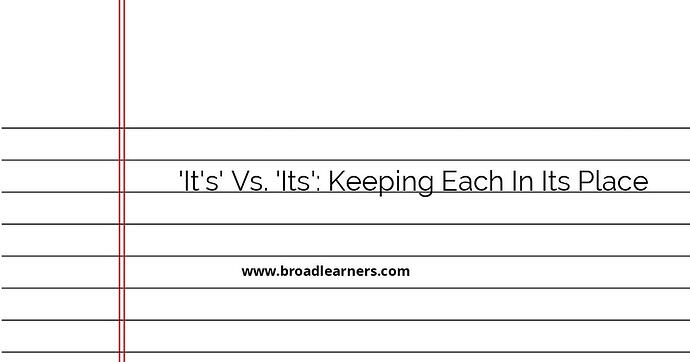The English language can sometimes be tricky, especially when it comes to homophones like 'it's' and 'its'. To a beginner, these words may appear similar, but they serve different grammatical purposes. Understanding their correct usage is crucial to mastering English grammar. In this article, we delve into the differences between 'it's' and 'its' with detailed explanations and examples:
- 'It's'
'It's' is a contraction that combines 'it is' or 'it has'. When you want to shorten these phrases, 'it's' is the correct form.
Example:
Full Sentence: It is a beautiful day outside.
With Contraction: It's a beautiful day outside.
In this sentence, 'it's' indicates 'it is'. It is important to know that contractions are widely used in informal writing and everyday speech.
Another Example:
Full Sentence: It has been a long time since we met.
With Contraction: It's been a long time since we met.
Here, 'it's' stands for 'it has', demonstrating its use for times when 'it' is combined with the auxiliary verb 'has'.
- 'Its'
'Its' is a possessive pronoun used to signify ownership or belonging. It indicates that something belongs to 'it'. Unlike 'it's', 'its' does not contain an apostrophe.
Example:
Example Sentence: The cat licked its paw.
In this sentence, 'its' shows that the paw belongs to the cat, demonstrating the possessive form.
Another Example:
Example Sentence: The company celebrated its anniversary.
Here, 'its' indicates that the anniversary being celebrated belongs to the company.
Understanding the distinction between 'it's' and 'its' is essential for accurate grammar usage. Remember:
- If you can replace 'it's' with 'it is' or 'it has', then 'it's' is correct.
- If the sentence suggests a sense of ownership and does not involve 'it is' or 'it has', then use 'its'.
By practicing these guidelines, even beginners can use 'it's' and 'its' confidently and correctly in their writing.
Did I miss anything? Respond below
